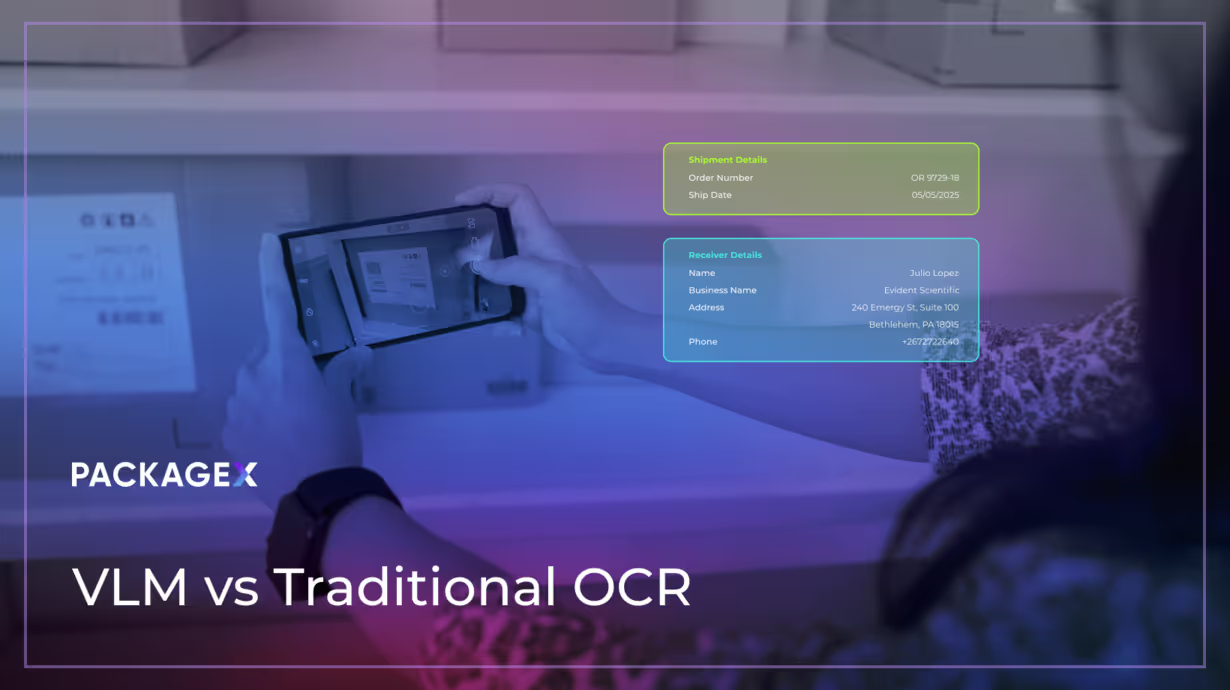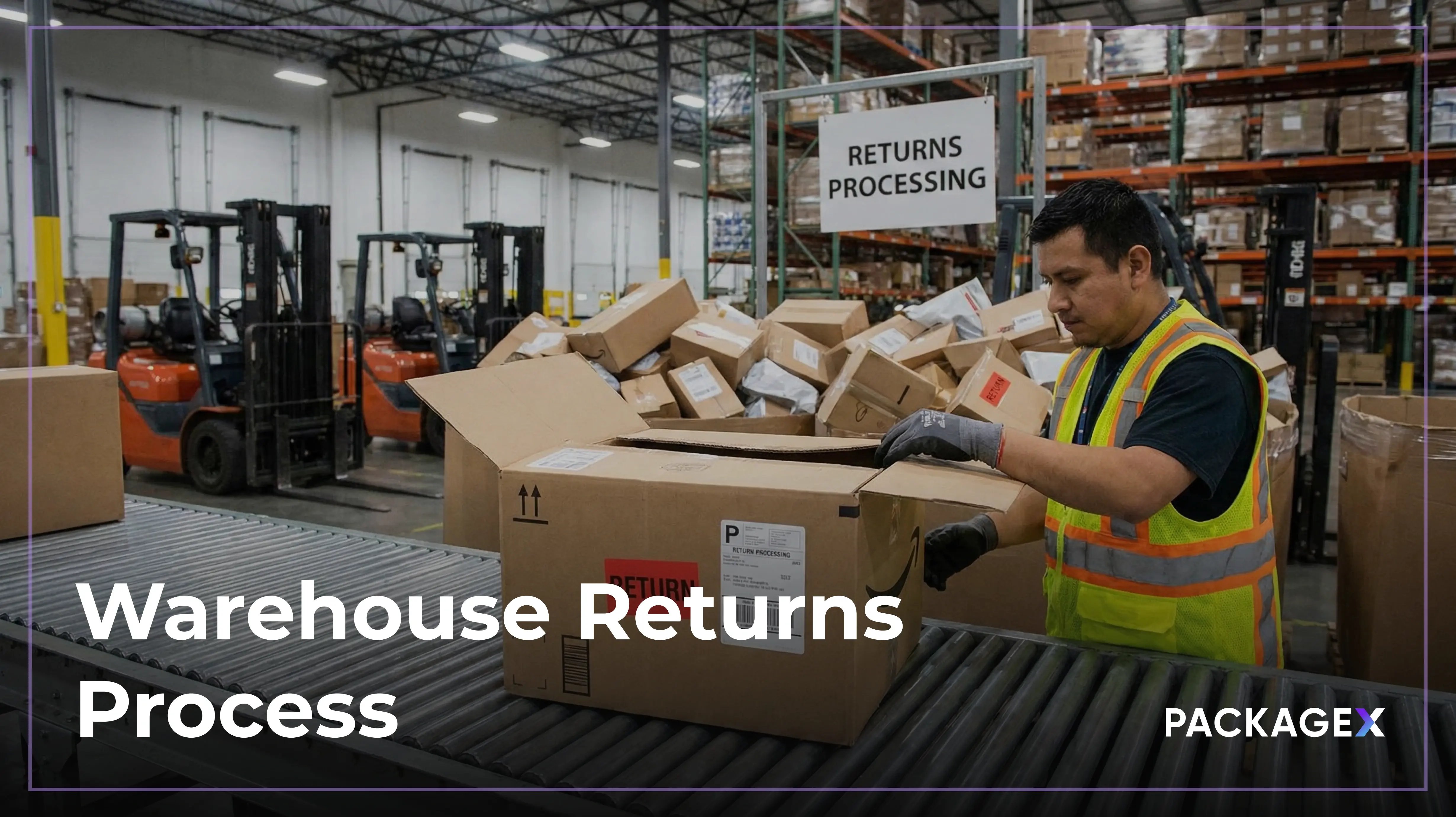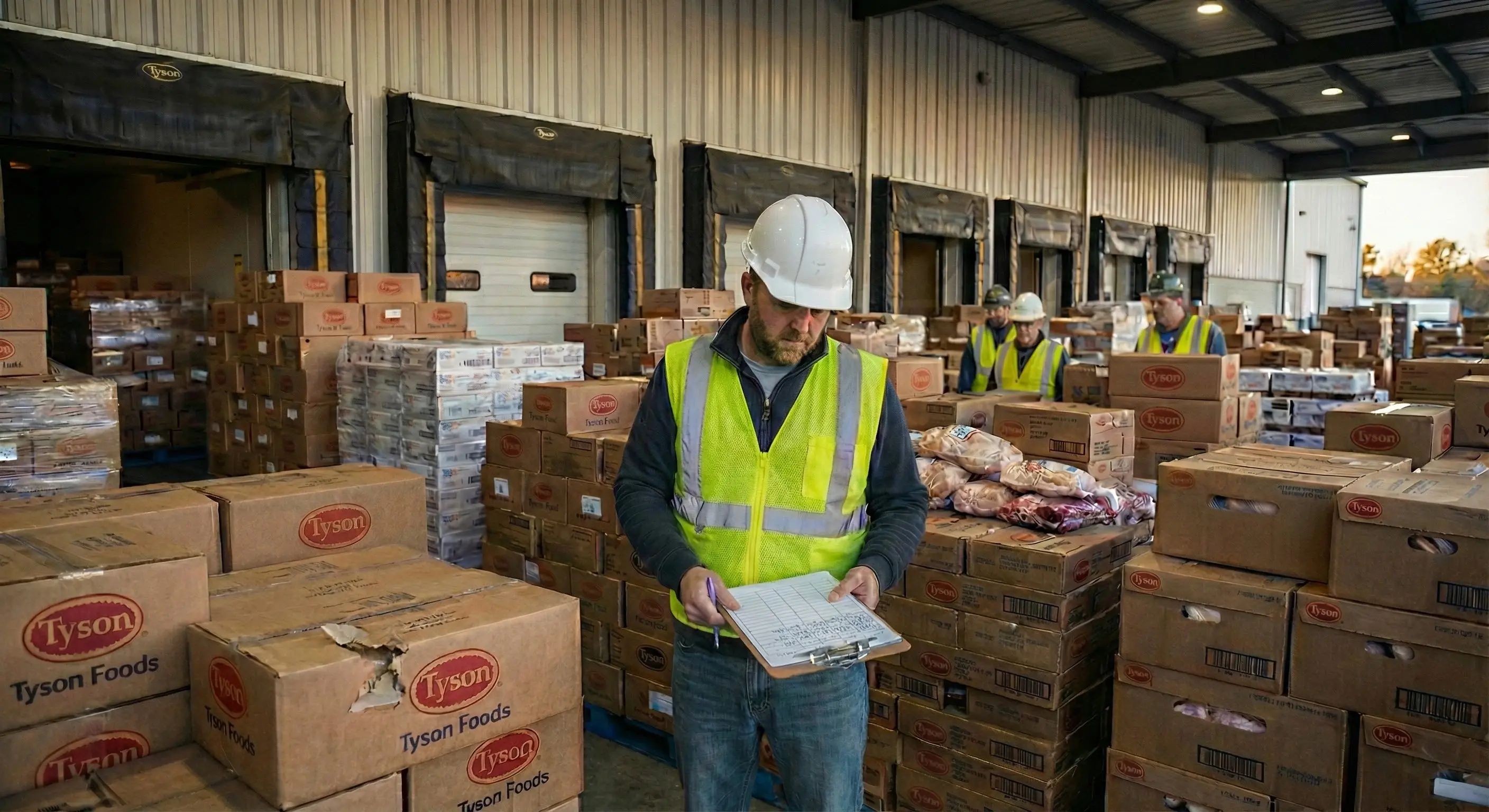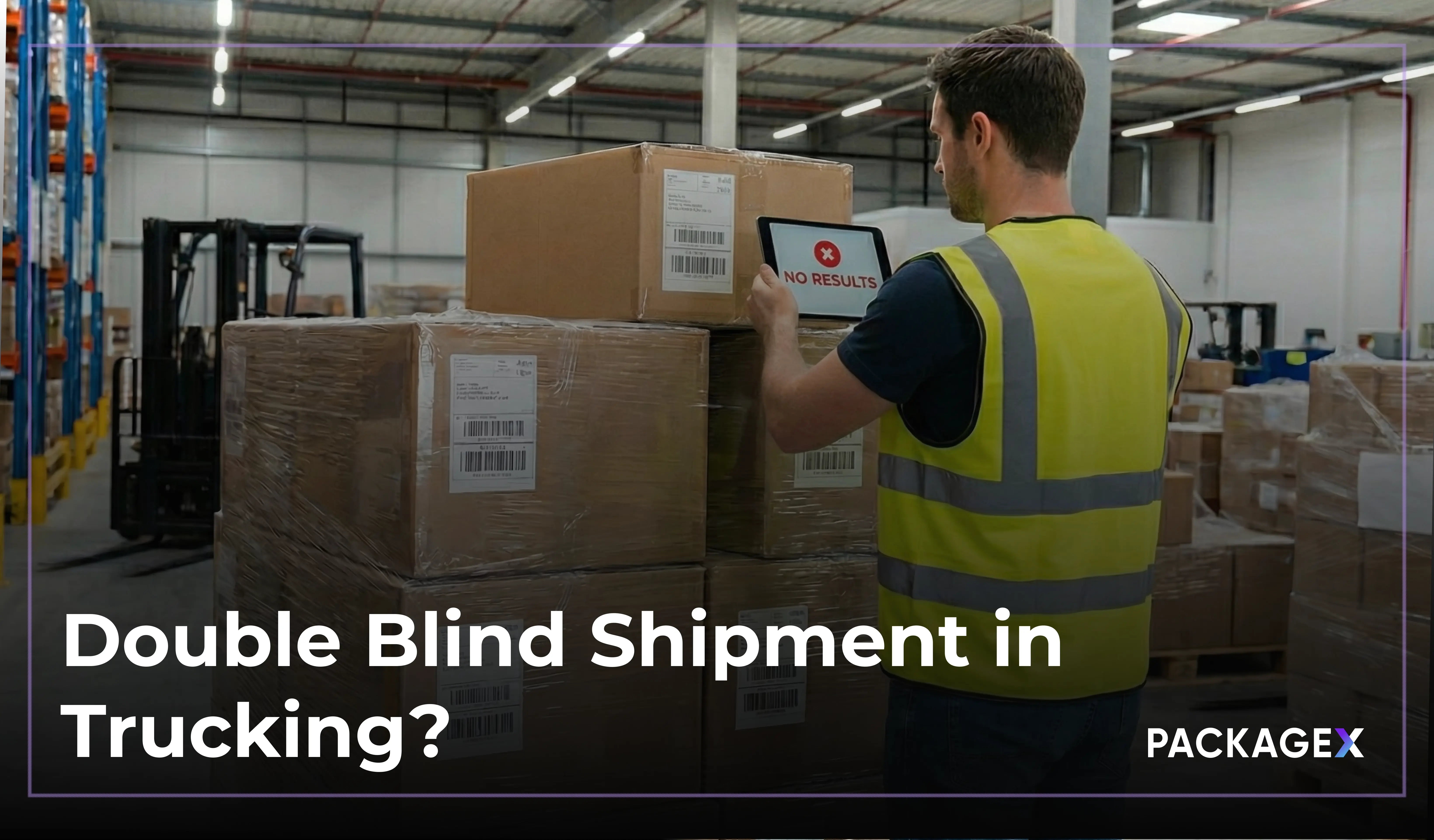For decades, logistics companies have only relied on manual data entry, extensive paperwork, and traditional Optical Character Recognition (OCR) to process shipping labels, invoices, and other vital documents like waybills and bills of lading.
While these methods helped automate some tasks, they often ended up creating more problems than solutions. Manual data entry is slow, open to errors, and, above all, very costly, while OCR struggles with handwritten notes, smudged text, and non-standard formats. These inefficiencies can lead to missed deliveries, invoicing errors, and operational delays— such issues can cost your business millions.
To address these problems, Vision Language Models (VLMs) are the next much-needed evolution in document processing. Unlike OCR, which extracts text without context, VLMs combine computer vision with natural language understanding to interpret information accurately. They recognize patterns, understand intent, and can easily adapt to multiple document formats, making them a game-changer for logistics. With the help of VLMs, businesses can eliminate manual intervention, improve accuracy, and streamline workflows, resulting in improved efficiency and reduced costs.
As the logistics industry now incorporates AI-driven automation, VLMs stand out as the future of intelligent document processing.
Traditional OCR: Strengths and Limitations
Since a notable period, Optical Character Recognition (OCR) has been a go-to solution for digitizing printed and handwritten text. It operates by scanning images of documents and converting text into machine-readable characters. Many businesses use OCR to extract information from invoices, shipping labels, and other logistics documents, which reduces manual data entry and also the risk of human errors. However, while OCR speeds up processing, it may fall short in many real-world applications.
Common OCR Challenges
- Struggles with Handwritten, Low-Quality, or Non-Standard Documents
OCR performs well with clean, aligned, printed text but struggles with handwritten notes, faded ink, or crumpled documents. Any writing errors, distortions, and varying fonts often result in incorrect text extraction. - Lack of Contextual Understanding
OCR reads characters but doesn’t understand the meaning. For instance, if a label contains “DTE: 10/24,” OCR may extract it as “10/24” without recognizing it as a delivery date. OCR often misinterprets or misses critical information, which can lead to errors, causing costly mistakes for your business. - High Error Rates and Inefficiencies
Even a minor error rate can create major issues in high-volume operations. Businesses will then have to correct mistakes manually, which eventually slows down workflows. Rule-based advancements help but usually fail when documents deviate from the typical predefined templates.
While OCR has automated document processing to some extent, its limitations make it unreliable for complex logistics needs. This is where the need for Vision Language Models (VLMs) arises. VLMs offer more innovative, context-aware solutions that eliminate the possibility of errors.
Vision Language Models: A Game-Changer in Document Processing
Considering the possibility of OCR errors, Vision Language Models (VLMs) are preferred as they excel at offering a more advanced approach to document processing.
What is a Vision Language Model?
A Vision-Language Model (VLM) is a powerful AI system with broad applications across industries, from document processing and healthcare to e-commerce and autonomous systems. Its ability to extract, interpret, and organize visual and textual data makes it invaluable for tasks like automated content tagging, medical image analysis, and product recognition.
VLMs in logistics are known for their contextual understanding. They infuse computer vision with natural language understanding to extract, interpret, and organize data from scanned documents. Unlike traditional OCR, which simply converts images to text, VLMs infer meaning based on surrounding information.
For example, if a label reads “MFG: 10/24” without a clear heading, a VLM can determine whether it refers to a manufacturing or expiration date by analyzing contextual clues. This adaptability showcases one of many ways VLMs enhance automation and decision-making across domains.
How Vision Language Models Solve OCR’s Shortcomings
VLMs address the significant weaknesses of OCR by:
- Understanding Context:
They understand relationships between text elements, ensuring precise data extraction. Studies show that VLMs reduce document processing errors by up to 60% compared to traditional OCR. - Handling Diverse Document Formats:
Whether it’s shipping labels, invoices, or bills of lading, VLMs can adapt to different layouts without the need for manual template adjustments. This flexibility saves companies hundreds of hours per month in manual data correction.
- Enhancing Accuracy and Automation:
VLMs can process documents 7x faster than the traditional OCR, which ultimately enables logistics teams to extract critical data in real time. This automation reduces manual errors and also helps to cut down operational costs by 60% on average.
With global logistics relying on faster, more reliable document processing, VLMs are revolutionizing how businesses handle scanned data—offering higher accuracy, effectiveness, and scalability.
Key Benefits of Vision Language Models in Logistics
Vision Language Models (VLMs) are transforming the logistics industry by enhancing efficiency and precision in document processing. Here's how:
1. Higher Accuracy in Data Extraction
Traditional Optical Character Recognition (OCR) systems often struggle with low-quality scans and non-standard document formats, which causes errors in data extraction. In comparison, VLMs manage to understand both visual and textual information, reducing the risk of data misinterpretations.
2. Faster Processing Speeds
The integration of VLMs into logistics significantly improves document processing times. By automating data extraction and interpretation, VLMs reduce the need for manual intervention, resulting in less time consumption.
For example, Amazon's next-generation fulfillment centers, which utilize advanced AI and robotics, have achieved up to a 25% reduction in processing times.
3. Reduced Manual Workload and Costs
By automating complex data extraction tasks, VLMs eliminate the manual workload on employees, which allows them to focus on more strategic activities than just manual data entry. This automation leads to noticeable cost savings by minimizing errors and reducing the time spent on manual data entry.
For instance, AI-driven solutions in logistics have helped to optimize delivery routes and reduce fuel consumption, leading to operational cost reductions.
4. Adaptability to Complex Logistics Documents
VLMs excel at handling an extensive range of document types, including invoices, shipping labels, and customs forms. Their APIs to interpret context allow them to adapt to various formats and extract relevant data accurately. In benchmarking studies, VLMs have shown high accuracy in extracting information from complex documents, overshadowing the traditional OCR.
5. Improved Compliance and Security Measures
Staying aligned and in compliance with industry regulations is crucial in logistics. VLMs enhance this by accurately interpreting and extracting vital information, reducing the risk of non-compliance due to human error. Additionally, VLMs can be deployed in secure, on-premises environments, ensuring sensitive data remains protected and ensuring data privacy regulations.
[video:https://www.youtube.com/watch?v=J4OxsoWs4bE]
Challenges of Implementing Vision Language Models
Implementing Vision Language Models (VLMs) is also prone to presenting several challenges that need to be addressed for effective deployment and scalability.
1. Computational Costs & Server Requirements
VLMs require significant computational resources, often involving high-performance GPUs or TPUs for training and inference. According to a 2023 study by MIT Technology Review, training large models can cost millions of dollars, especially when using cloud-based infrastructure. This makes scaling VLMs very costly for smaller companies and increases operational expenditure.
2. Limitations in Zero-Shot Learning for Niche Documents
Zero-shot learning, which allows models to generalize to unscheduled tasks, faces limitations in niche domains. VLMs may struggle understanding specific industry terms or jargon, leading to less accurate outputs. Research by OpenAI shows that zero-shot performance drops significantly when models are applied to specialized fields, like legal or medical documents.
3. Privacy & Compliance Concerns
While data-driven AI offers numerous advantages, privacy concerns have become a critical issue. Full-scale VLMs rely on vast datasets, which can raise significant compliance risks related to GDPR and corporate policies. However, when specific APIs distilled from VLMs are used instead of the entire model, these risks are significantly reduced, as they provide only the necessary functionality without exposing excessive data. A 2023 Gartner report highlighted that nearly 60% of businesses face regulatory challenges when implementing AI models, often delaying development and adoption.
4. Deployment Issues on Edge Devices & Mobile Environments
Deploying VLMs on edge devices and mobile environments is a complex task. These devices often have limited computational power and memory, making it challenging to run resource-intensive models. According to TechCrunch, only 15% of AI models are currently optimized for mobile systems, which presents a significant barrier for real-time applications like augmented reality (AR) or autonomous vehicles.
These challenges must be carefully considered when integrating Vision Language Models to ensure a balance between performance, compliance, security, and resource optimization.
PackageX: Transforming Logistics Across Industries
PackageX is transforming the way businesses handle package management by bringing efficiency and automation to industries that rely on seamless logistics.
PackageX has streamlined package tracking in the property management sector by processing over 920,240 scans, reducing delays, and ensuring that tenants receive their deliveries on time.
With 888,392 scans and an 85% improvement in tenant experience, PackageX has transformed mailroom operations at WeWork co-working spaces by reducing misplaced packages, streamlining workflows, and ensuring seamless deliveries for members. In the logistics and warehousing industry, 404,324 scans highlight the platform’s impact, providing businesses with greater supply chain visibility and faster order fulfillment. With PackageX’s smart technology, companies can streamline operations, reduce inefficiencies, and ensure smoother, more reliable deliveries.
These numbers reflect a growing demand for intelligent, data-driven solutions that enhance efficiency, security, and customer satisfaction across multiple industries.
How PackageX Optimizes Vision Language Models for Logistics
PackageX takes a unique approach to optimizing Vision Language Models (VLMs) for the logistics industry, ensuring high accuracy and efficiency in processing complex logistics documents.
As it is trained on over 100 million logistics-specific documents, PackageX’s models are tailored to understand the context of industry-specific terminology, improving extraction precision for documents like shipping labels, invoices, and customs forms. This large-scale dataset ensures that the models are equipped to handle the diverse range of papers found in the logistics sector.
We have also developed distilled models that are optimized for mobile and edge devices, ensuring faster processing speeds without compromising performance. These optimized models are key to enabling real-time decision-making in logistics operations, especially in environments with limited connectivity.
PackageX also excels in standardized data extraction, making it easy to process various types of documents uniformly. Whether it's a contract, a delivery receipt, or a tracking form, the system ensures consistency and precision, reducing the risk of manual errors.
With flexible deployment options, including cloud, on-premises, and offline solutions, PackageX gives businesses the freedom to choose the best infrastructure for their needs. This adaptability makes it a perfect fit for organizations of all sizes, ensuring seamless integration into existing logistics workflows. Furthermore, its cost-effective implementation reduces server expenses, making it a smart choice for logistics companies looking to streamline operations while keeping costs in check.




